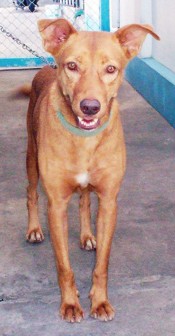Continued
Snake bite
There was a time whenever I heard ‘snake bite’ as a cause of death, especially among domestic livestock, I used to laugh and deem it an embarrassment diagnosis. In other words, whenever the herdsman or the ranch manager was not sure of the cause of death, the easiest thing to blame was poison from snake bites. I still believe that many of the livestock deaths attributed to snake venom might not reflect a great reality. Snake bites in dogs is a different matter. Although many dogs are smart enough just to bark at (but keep their distance from) snakes, too many wish to effect a confrontation – and they come out second best if the snake is poisonous.
Actually, most snakes are non-venomous, so you don’t have to worry too much just because your dog has been bitten by a snake. Also, snakes tend to slither away from confrontation with humans/dogs. My smart textbook tells me that bites of harmless snakes show teeth marks in the shape of a horseshoe, while the bites of poisonous snakes, which have fangs, exhibit holes in the skin. Well, I have seen enough dogs in my decades of practice which show all the signs of being afflicted with snake venom, yet it is so difficult to find the fang wounds. What I am really saying is that you should look for other symptoms and not rely on fang marks, which in long-haired dogs are obscure. Of course, if you actually see the snake and better yet, if you kill/capture it and present it to your vet, it would help in the ultimate diagnosis.
Firstly, try to identify the snake and look for the bite marks. If it appears that your dog is bitten by a poisonous snake, proceed as follows:
1. Restrain the dog. Snake bites are extremely painful; the dog might want to bite you.

2. Apply a flat tourniquet above the bite wound. (It should not be as tight as an arterial tourniquet; yet be tight enough to keep venous blood from returning to the heart.)
3. Using a knife or razor blade, make parallel cuts ¼˝ deep through the fang marks. If the bite
marks are on a leg, make the cuts up and down. Blood should ooze from the wound. If not, loosen the tourniquet.
4. There is a lot of debate as to whether one should apply mouth suction to the wound. First of all it is unaesthetic and, secondly, many people fear getting poisoned themselves. Well, this latter consideration is most unlikely, although I would not suggest that you use mouth suction, if you have a cut or an open sore in your mouth.
Suck and spit and wash your mouth out immediately. Repeat this as often as necessary, at least six times, over a 15 minute period. If snake venom is swallowed, the stomach will inactivate it.
5. Loosen the tourniquet for 30 seconds every 20 minutes or so.
6. Keep the dog quiet. Excitement, exercise, struggling increase the rate of absorption. Carry the dog to your veterinarian.
Specific antivenoms are available through veterinarians. Sometimes snake bites become infected. Antibiotics and
Please implement disease preventative measures (vaccinations, routine dewormings, monthly anti-heartworm medication, etc) and adopt-a-pet from the GSPCA’s Animal Clinic and Shelter at Robb Street and Orange Walk, if you have the wherewithal to care well for the animals. Do not stray your unwanted pets, take them to the GSPCA’s Clinic and Shelter instead. If you do not wish your pet to have puppies or kittens, you may exploit the GSPCA’s free spay and neutering programme. If you see anyone being cruel to an animal, or if you need any technical information, please get in touch with the Clinic and Shelter by calling 226-4237.










